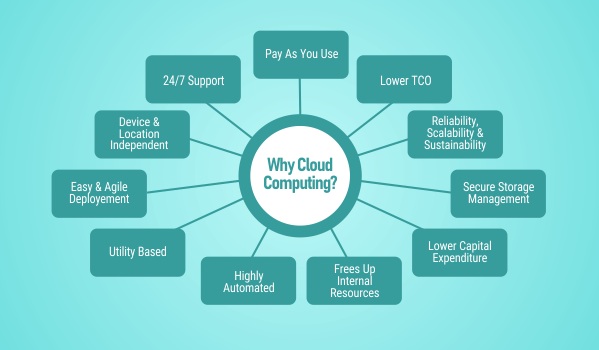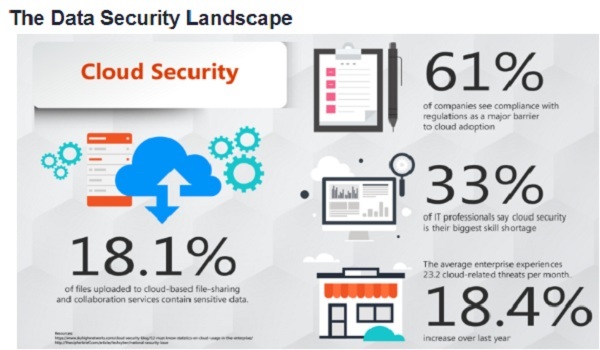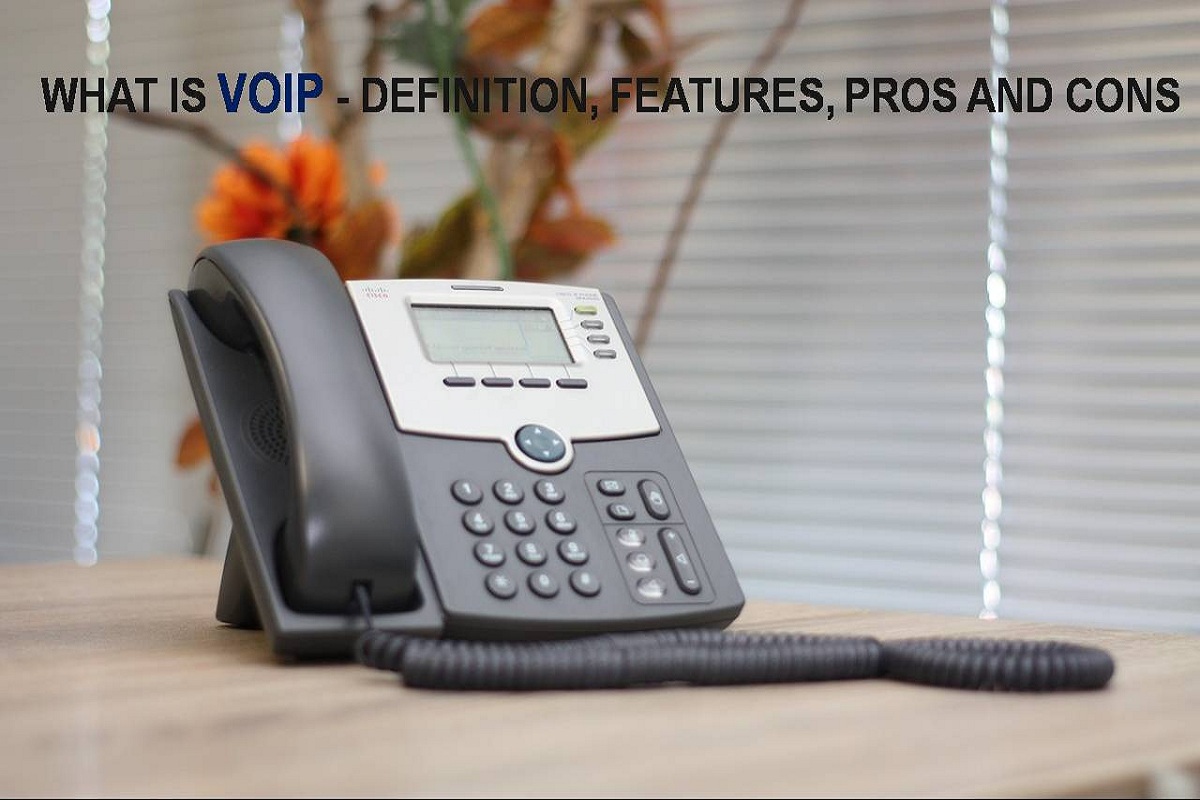

Discover How Cloud Computing Elevates Cybersecurity – Your 2019 Guide
Cloud Computing: The New Everyday Superhero
It’s hard to imagine a world where we’re not talking about cloud computing. From streaming your favourite show to backing up that last-summer photo stash, the cloud has crept into almost every digital corner of our lives. And guess what? It’s not just a convenience—it’s also playing a crucial role in fighting the ever‑evolving world of cyber threats.
How Common is Cloud Computing?
Almost everyone uses something that runs on the cloud, even if you don’t realize it. Businesses are moving their SaaS and IaaS solutions to cloud platforms; small‑to‑medium‑size companies adopt cloud services to stay competitive. And on the personal side, cloud storage drives like Dropbox or Google Drive are household names. The verdict? Cloud computing is probably the most ubiquitous way we store, process, and share data today.
Why the Cloud Helps Cybersecurity
Think of the cloud as a fortified castle with flexible defense layers. It offers security benefits that are harder to achieve with on‑premise hardware. Here’s how the cloud buffs your cyber shield:
- Data Security
Security teams can deploy encryption-in-transit and in‑storage, apply automated patching, and enforce data access policies that run in real time. The result? Lower risk of data breaches and an extra layer of accountability.
- Centralised Security
With a single vendor overseeing all resources, you get uniform policies, consistent threat monitoring, and a reduced “orphaned” infrastructure that could hide malware.
- Lower Admin Load
Administrator work shifts from manually configuring firewalls to higher‑value tasks like fine‑tuning analytics. The cloud automates routine checks, freeing up time for innovation.
- Compliance Made Easy
Cloud providers are often audited for standards like ISO 27001, SOC 2, and GDPR. This means your organization can meet regulatory benchmarks without building every compliance measure from scratch.
- Round‑the‑Clock Support
Many cloud services come with 24/7 monitoring and incident response. If something shows up in the logs, you’ll usually have an alert before your team has to scramble.
- Distributed Denial‑of‑Service (DDoS) Protection
Cloud Infrastructure and Security teams have the capacity to absorb massive traffic surges. They can advertise multiple routing paths and divert attacks away from your critical services—an act of cyber‑superhecosity.
What You Should Take Away
The cloud isn’t just a way to save storage space; it’s an accelerating force against cyber threats. Whether you’re a small business or a multinational, embracing the cloud transforms your security posture from patchy to robust. Remember, the best defense is a mix of strong technology, great people, and, of course, a cloud-friendly mindset.
Get Ready for the Future
Security landscapes are liable to shift faster than the price per GB keeps dropping. Equip yourself early, keep an eye on the latest cloud capabilities, and give those data breaches a run for their money. Cloud-based security isn’t a feature—it’s the new norm.
Cloud Computing is Helping CyberSecurity
Cybersecurity in the Modern Age
Think of cybersecurity as the very sturdy chain that keeps your computers, software, hardware, networks, and servers bullet‑proof against data theft or damage. In the 21st‑century digital world, securing these assets isn’t just smart—it’s essential.
The Data Explosion
Astonishingly, businesses are moving almost everything online, and the data numbers are skyrocketing. Forbes recently forecasted that by 2020, the internet would store around 44 zettabytes of information—so big, you’d need a whole planet to hold it.
As The Economist puts it, “the world’s most valuable resource is no longer oil, but data.” That’s a call to arms for anyone handling sensitive information.
Why Protecting Data Matters
- Trust erosion—once a breach happens, customers will doubt you.
- Regulatory penalties—fines can cripple a small business.
- Competitive edge—protecting data keeps your innovations safe from copycats.
Cloud Computing to the Rescue
Enter the hero: cloud computing. It’s not just about offloading servers to the internet; it’s a game‑changer for cybersecurity.
- Automatic updates: Cloud providers push the latest security patches faster than a superhero’s cape.
- Data redundancy: Multiple data centers mean that if one fails, the other stands guard—no data lost, no panic.
- Scalable defense tools: From AI‑driven intrusion detection to advanced encryption, the cloud offers a toolbox that grows with your business.
- Cost‑efficient security: Small firms get enterprise‑grade protection without breaking the bank.
So the next time you wonder how to keep your business safe in this hyper‑connected age, remember: the cloud is your frontline defender, ready to keep the data gods at bay.
How common is cloud computing?
Cloud Computing: From Skepticism to Mainstream
At first, the idea of data living somewhere “in the clouds” felt like a sci‑fi gimmick, yet today it’s a global norm—think of it as the new internet “free tier”. A Pew Research Centre study revealed that 69% of Americans already tap into cloud services, proving the hype was just the beginning.
Why The Shift Is Inevitable
- Corporate Fatigue with On‑Prem Constraints – By 2020, the “no‑cloud” stance will be a relic. Companies are draining themselves chasing legacy hardware, while the cloud offers a lean, scalable alternative.
- Monetary Momentum – The industry rings in at around $110 billion, a figure that stretches across every sector—from retail to research labs.
- Security Boot‑Camps – Cloud platforms act as a hardening layer for cyber‑security, giving firms a robust shield without the heavy lifting.
What It Means for Business
Modern enterprises now regard the cloud like a Swiss Army knife: it’s not only convenience, but a strategic weapon. Companies able to harness this power often soar ahead of competitors, turning digital fatigue into a competitive edge.
Final Takeaway
Cloud computing has moved from a skeptical novelty to a critical infrastructure pillar. And if you thought the concept was all zeros and bolts, think again—it’s now the backbone keeping business engines humming worldwide.
How can “cloud computing” help cybersecurity?
Why Cloud?
Big businesses are flying in the cloud to supercharge their cybersecurity game. But it’s not just about protectin’ data – the cloud also offers some sweet perks that make every company’s life easier.
Perks you’ll love
- Lower overhead costs – say goodbye to those expensive on‑prem backups.
- More storage – keep everything in one place without the worry of running out of room.
- Anywhere, anytime access – work from a coffee shop, a beach, or that secret hide‑away base you built.
Multiple Layers of Control
Cloud computing gives you “toolkits” for each layer of your network – from the front‑door firewall to the mind‑level encryption. That means you can lock down every corner of your data battlefield.
Ready to see the magic?
Before we break down how cloud tech is becoming the shield in modern cybersecurity, check out this infographic below. It’ll give you a quick snapshot of how the cloud protects against the latest threats.
 It looks like there wasn’t any article text included in your message.
It looks like there wasn’t any article text included in your message.
If you have a news piece or any text you’d like me to rewrite, just paste it here and I’ll gladly transform it into a fresh, engaging version with a friendly tone, proper HTML structure, and a dash of humor.
Let me know what you’d like to work on!
1. Data Security
Moving to the Cloud: Your Data’s New Fortress
Picture this: your precious data is now living in an elegant, invisible vault that never lets anyone peek inside—unless you’re the one with the key. That’s the magic of cloud storage.
Why Swapping to the Cloud is a Game‑Changer
- Encrypted by Default: Every file, every byte is wrapped in a strong layer of encryption. Think of it as a digital lock that only opens for the legitimate owner.
- Zero‑Touch Security: You no longer need to worry about misplaced laptops or stolen USB sticks. The data stays where you put it—securely hidden behind a cryptographic curtain.
- No Physical Vulnerability: Without a physical device that can be salvaged, attackers lose a whole playground of opportunities.
How Encryption Works for You
When your information reaches the cloud, it’s immediately encrypted—like a well‑hidden diary in a lockbox. Without the encryption key, you can’t read the contents. That means your secrets remain protected even if the system itself gets compromised.
In short, moving to a cloud‑based platform thwarts many potential data‑breach avenues. The only break in the chain? Breaking the encryption, which, let’s be honest, is practically a super‑villain’s super‑power you probably don’t want.

Secure Cloud File Editing Done Differently
Many cloud services let you casually drag and drop files, but Mega and SpiderOak take a different tack. They force you to use their own client apps to tweak files—and the catch? Those apps come with built‑in encryption.
Why the extra step? It lets you keep the encryption keys in your own digital vault, so nobody else can sneak a peek. In short, it makes hacking your data a real uphill battle for any third party.
- • Mega: Keeps your files locked behind the keys you control.
- • SpiderOak: Seriously dedicated to privacy, using the same win‑win approach.
2. Centralization of security
Why Cloud Protection Is a Central Hub You Can’t Ignore
Think of the cloud not just as a place to stash data or run apps, but as a central guardian that watches over every device and endpoint hanging onto your business network.
The Power of One‑Stop Security
- Streamlined oversight: With everything in one spot, spotting a glitch becomes almost like finding a misplaced sock.
- Smart filtering: Highlight the tasks that matter most and let the rest drift into the background.
- Keep tabs on software updates—you’ll know when the next patch drops and can act before the tech gremlins get a chance.
- When the unexpected happens, recovery plans are ready to fire up instantly, saving you priceless minutes.
Is Centralization Right for You?
Sure, people clash over whether to centralize or decentralize, but the final call is yours. Ask yourself: What makes the most sense for your company’s style, size, and risk appetite?
Two Quick Tips
- Prioritize your security checkpoints—the ones that could cripple the business if they fail.
- Automate those heaviest tasks—think of it as giving your network a superhero cape.
In short; a cloud that protects is more than just something you store stuff in. It’s your digital command center, ready to act when you need it.
3. Administration load reduced
Say Goodbye to Admin Overload
Ever feel like your office is a circus, with a crew of tech wizards spinning plates all day? That’s exactly what traditional business ops look like. Companies are stuck juggling a full stack of software, and they have entire teams to keep it all humming.
The Old‑School Routine
- Welcome‑Kit Admins: The system squad greets every new hire by fashioning a fresh email address on the internal network. It takes minutes—if you can spare it.
- On‑The‑Spot Security Patrol: Manual inspections, patches, and user permissions—like a guard constantly looking for burglaries, but on a laptop.
Sure thing, it keeps things safe, but it’s also a massive drain on time and money. Every tick in the admin clock is a cost you can’t afford to keep spinning.
Enter the Cloud: The “Smart” Upgrade
Think of a cloud provider as a super‑smart Swiss Army knife that does most of the heavy lifting for you.
- Automated Updates: Security patches roll out silently behind the scenes—no manual hand‑off needed.
- One‑Pane‑Solution: Provisioning, monitoring, and maintenance all live in a single dashboard. One click keeps everyone in sync.
- Zero‑Handoff Emails: New hires get their email addresses automatically, no waiting for the admin team.
The result? A giant slice of time (and cash) gets shaved off the daily grind. It’s like moving from a manual toolbox to a fully stocked, self‑organizing shed.
Bottom Line
Swapping to a cloud platform means less “manual admin” and more “productive work.” It’s the business world’s equivalent of upgrading from a flip phone to a smartphone—everything just feels smoother and faster.
4. Regulatory compliance
Why Switching to the Cloud Packs a Punch in Protecting Your Data
When it comes to keeping sensitive information safe, there’s a whole buffet of rules and regulations that businesses must obey. Think of HIPAA sweeping the U.S. healthcare scene and PCI DSS guarding credit‑card data globally—they’re the bedrock pillars of modern cyber defense.
The Human Toll of Manual Compliance
- Time‑consuming – Recipe‑like processes that stretch for weeks or even months.
- Cost‑intense – Staffing full‑time auditors, consultants, and support teams.
- Prone to error – One slip of a finger can leave a dozen gaps wide open.
Enter #Cloud – The Game Changer
By migrating to a cloud‑based platform, a lot of those tedious tweaks get automated, instantly cutting out the human slip‑up factor. The result? Smooth, error‑free, and budget‑friendly compliance.
Stats That Speak For Themselves
Check out this eye‑popping figure: businesses that lean on cloud automation see up to 90% fewer compliance gaps and a 50% drop in incident response time. That’s basically like swapping a cobwebstitched umbrella for a lightning‑fast one!
In short, if you’re tired of juggling endless manual checks and want a more efficient, reliable shield for your data, the cloud might just be your superhero cape.

Cloud Computing: The Cyber‑Security Superhero
Picture this: you’re juggling servers, patching apps, and trying to stay ahead of the ever‑shifting threat landscape. Sounds like a circus act, right? Now imagine the routine magically transforms into a smooth, choreographed dance—thanks to the cloud.
Why the Cloud Makes Life Easier
- Automatic updates: No more frantic manual installs—cloud platforms push the latest patches in the blink of an eye.
- Centralized management: You can tweak your entire infrastructure from a single dashboard, saving time and reducing human error.
- Scalable security: As your needs grow, the cloud scales with you, delivering robust protection without the overhead.
Cyber‑Security Gains
The cloud isn’t just a convenience; it’s a force multiplier for security. By offloading infrastructure maintenance, teams can focus on ahead‑of‑curve defenses, threat hunting, and incident response—keeping the digital world safer, one update at a time.
5. Round the clock support
Why Your Cloud Needs a Cyber‑Ninja Team
Picture this: your company is living in the cloud, sipping digital coffee while it zooms through business leads. Just like any high‑stakes rodeo, you need a crew of sharp‑shinned experts to keep the digital frontier safe—think of them as the Cyber‑Ninjas of the cloud.
Who’s on the Squad?
- Certified Rockstars: These folks hold top cybersecurity certificates – the kind that make other pros look like they’re still working on their homework. Online certifications do the trick too; the goal is brains, not books.
- Anywhere, Anytime: Whether they’re sipping coffee in Tokyo or munching donuts in Dallas, they all have the same 24 × 7 baton. They’re always on stand‑by, ready to swoop in when a cyber murmur pops up.
- Live‑Stream Vigilance: Their monitors run like night‑watchers—never closing eyes on suspicious activity. If something looks fishy, you’ll be notified in real time, and a fix will be deployed faster than you can say “cloud backup.”
The Cloud Advantage: Money, Time, & Zen
When you move business into the cloud, you discard hefty overheads—rent, lamps, and electricity are all off the bill. Here’s the sweet part:
- Cost‑Cutting: Less money spent on physical office space means more for your coffee budget.
- 24/7 Flexibility: Even if you’re taking a midnight business call, your cloud’s still humming with support.
- Never Offline: Back‑ups are the secret sauce that guarantees you’re up and running, even if one server releases a digital sigh.
Back‑up: The Unsung Hero
Think of your backups as a safety net for when the digital circus does a high‑wire act. They keep the business running no matter what, so you can keep your focus on closing deals, not chasing data ghosts.
Round‑the‑Clock Support
With a full‑time support squad, there’s no cliff of data breach or theft lurking around. They lock doors, patch holes, and keep the cyber bad guys at bay—so you can sleep well, nights and days.
Bottom line? A top-tier cybersecurity team is your company’s invisible shield, letting you leverage cloud freedom while staying invisible to the cyber‑villains. And that, dear reader, is the true power of the digital age.
6. Distributed denial of service (DDoS)
DDoS in the Cloud Era
DDoS attacks used to be the nightmare of companies run from brick‑and‑mortar data centers. Think of it as a massive traffic jam on the main highway to your website—users get stuck, sales drop, and the whole economy takes a pinch. But when you sit on the cloud, the traffic jam gets a major detour.
How the Cloud Outsmart Hackers
- Fast‑Firewall: Cloud providers have built‑in, automatically‑rolling security that spots and blocks shady traffic before it hits your frontend.
- Elastic Shield: If one part of the infrastructure is under siege, the cloud can simply rip up that unknown and spin up fresh, unaffected instances on the fly.
- Shared Resources: The attackers try to swamp one server, but the cloud’s a multi‑tenant gig. One brute‑force battle on a small server won’t bring down the entire network.
A Not‑So‑Terrible Case Study: The 2016 Dyn Attack
Back in 2016, the DNS giant Dyn stumbled when the attackers flooded its servers, causing outages for Facebook and Twitter. Cloud‑people say: “Oops, just a hiccup—our backup fleets saved the day!” Even in that blip, the ecosystem kept the explosion from turning into a widespread disaster.
Why the Cloud is Still the MVP
- Pre‑emptive Force: The cloud can anticipate attacks, deploy countermeasures, and react before the bad guys even hit the surface.
- Bottom‑Line Benefit: A seamless, uninterrupted customer experience means your merchants keep selling, customers stay happy, and the revenue doesn’t trip.
In short, while the classic “Exception proves the rule” vibe warns that there are always landslide failures, the evidence clearly shows that cloud‑based infrastructures give businesses a seriously higher chance of staying standing when the dodgeball of DDoS drops on them.
Wrap Up
How Clouds are Shaking Up Cybersecurity (and Making the Internet Safer)
The $207 Billion Hype
By 2019, the global public cloud market is expected to hit a whopping $207 billion — that’s almost enough to fund a small moon‑base!
94% of Enterprises are Already Cloud‑Fueled
Imagine a coffee‑shop where every patron already has their cappuccino brewed by a robot. That’s the vibe in the business world: 94 % of companies are already riding the cloud wave.
What This Means for Your Online Safety
- More Layers of Protection: Cloud providers are adding security tools faster than a caffeine‑driven coder writes scripts.
- Real‑Time Threat Hunting: With data zoomed into the cloud, attackers get one “slow‑poke”— the internet security team can spot them before they cause a stir.
- Automated Patch Management: Updates happen automatically, meaning your software stays locked down with minimal human intervention.
- Shared Best Practices: Different companies learn from similar data breaches, and then share that knowledge across the cloud ecosystem.
A Smiley Approach to Serious Security
Think of the cloud as a neighborhood watch that never sleeps. With the technology in place, we’re heading toward a future of secure browsing that feels less like a cyber‑horror movie and more like a friendly morning walk.
About the Author
Lucy Manole is a creative content writer and strategist at Right Mix Marketing, an SEO‑focused link building agency. She turns digital marketing, technology, entrepreneurship, and education into bite‑size stories. When not writing, she loves to read, cook, and travel. Follow her on Twitter: @RightMixMktg







